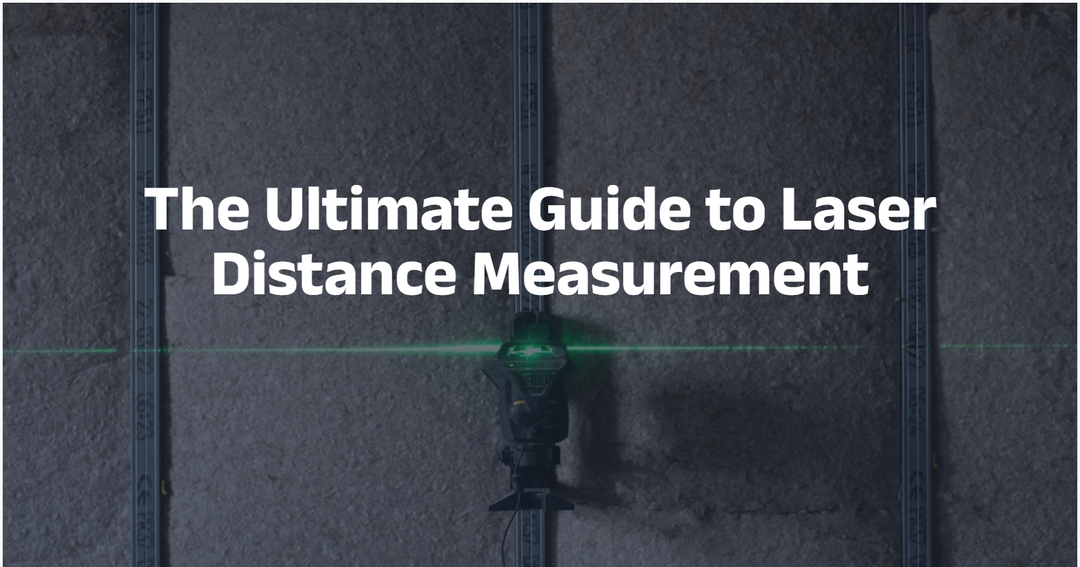How to Detect and Locate Underfloor Heating Pipelines
Underfloor heating pipelines can be hidden in many ways, making them hard to detect and locate if you don’t know what to look for. With this guide, you’ll learn how to detect and locate underfloor heating pipelines in the most efficient manner possible, saving time and money. We’ll cover everything from different pipeline styles to detection equipment and detecting tips.
Use Noyafa NF-826 Professional Underground Cable / Wire / Pipeline Locator: The Easiest Method
If you have underfloor heating in your home, you'll want to know how to detect and locate the pipelines so you can avoid them when working on home improvement projects. The Noyafa NF-826 Professional Underground Cable / Wire / Pipeline Locator is the easiest method for doing this.
Simply turn on the device and hold it near the floor. The device will emit a beeping sound that gets louder as you get closer to the pipeline. You can then use the included headphones to pinpoint the exact location of the pipeline.
You can then use the included headphones to pinpoint the exact location of the pipeline. The range of the detector is high, but it may vary depending on the condition of the ground. It's also small enough to fit in a pocket or purse, making it perfect for homeowners who are always on the go.
Some people find locating underground cables difficult because they need to walk back and forth while holding their metal detectors over all parts of the ground they think could contain wires or pipes.
With an underground cable locator like the Noyafa NF-826 Professional Underground Cable / Wire / Pipeline Locator, this isn't necessary. All you need to do is scan through the area with your device until you find what you're looking for! There's no need to waste time digging holes, which means you won't harm any buried utilities during construction.
It has a wide range that can accommodate any circumstance. Use one side of the locator where there is less interference (such as around areas with tall grass) and the other side where there is more interference (such as inside buildings).
And unlike other devices that require constant movement, only minimal movement should be required with this one to determine if there are any cables present.
Why Use Gpr To Map The Locations Of Under-floor Heating Pipes?

Ground Penetrating Radar (GPR) is a technology that can be used to detect and locate under-floor heating pipes. GPR works by sending out electromagnetic waves that penetrate the ground and are reflected back when they hit an object. The waves are then detected by a receiver, which creates a map of the underground features.
GPR is an accurate and non-destructive way to locate under-floor heating pipes, which is important for avoiding damage to the pipes during construction or renovation projects. It can also be used to detect leaks in the pipes, which can save money on energy bills.
For example, if your home's under-floor heating system has a leak, you will see the surface temperature rise. If you notice this happening, use GPR to pinpoint the location of the leak and call your local plumber before it becomes worse.
A GPR survey is conducted to identify the location of piping beneath floors
A GPR survey is the best way to detect and locate under-floor heating pipes. It uses radio waves to penetrate the ground and produce a map of the underground features. The GPR operator will first mark out the area to be surveyed. Then, they will scan the area with the GPR unit, looking for any anomalies that could indicate the presence of pipes.
Finally, they will interpret the data to produce a map of the underground features. For example, if the pipe was detected on one side of the room but not on the other side, then it can be assumed that there is likely a heat source in between those two points.
Additionally, if an anomaly was detected within a room but there are no radiators or boilers located nearby, then it is possible that the anomaly could be from an under-floor heating pipe.
Mapping The Locations Of Under-floor Heating Pipes
If you're considering adding under-floor heating to your home, you'll need to map the locations of the pipes before you get started. This will help you avoid damage to the pipes and ensure they are evenly distributed throughout the space.

There are a few different ways to detect and locate under-floor heating pipelines. First, use a stud finder. Second, use a metal detector. Finally, you can also simply look for telltale signs of heating pipes, such as raised flooring or warm spots on the floor.
Once you've located the heating pipes, you'll need to mark their locations on a map or blueprint of your home. Then measure the distance between them to ensure that there's enough room for each pipe without overlapping or touching one another. You should always leave at least four inches between each pipe so that air can circulate freely around them.
Locations of under-floor heating pipes were mapped using a GPR survey
A GPR survey can provide an accurate map of the locations of under-floor heating pipes. This is useful information for a variety of purposes, such as maintenance, repairs, or new construction. To get started, simply mark out the boundaries of the area you wish to survey. Then, using a GPR device, scan the area in a grid pattern.
The results will be displayed on a screen or computer, showing the locations of any under-floor heating pipes in the area. In order to ensure accuracy, it is best if there are no people or electrical cables located within the area being scanned.
If necessary, consider doing two scans at different heights in order to capture all pipelines accurately. For example, one scan could be done from ground level, while another is done from six inches above ground level. The data collected by these two scans can then be combined together to show the location of pipes at both heights.
Beware that power lines may show up in your data collection. It's important not to touch power lines with your equipment while surveying, because they may contain high voltage electricity that could harm you or your equipment.
GPR surveys are most effective when conducted outdoors (with access to natural light) and when scanning areas that have little vegetation coverage, buildings, or other obstructions - this ensures clear readings without interference from interference sources.





